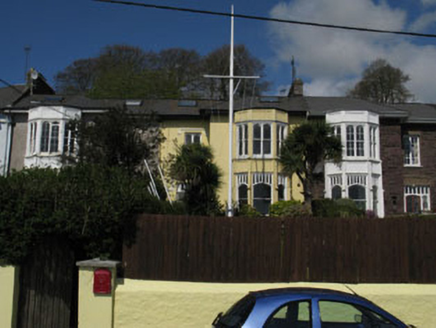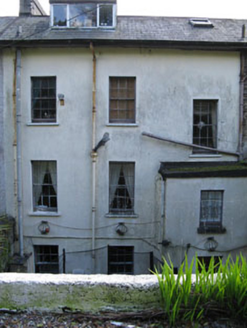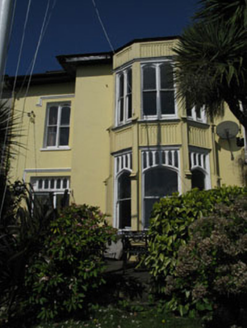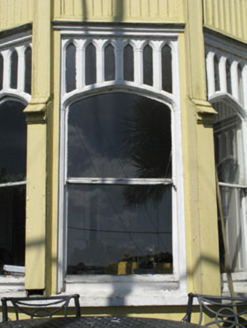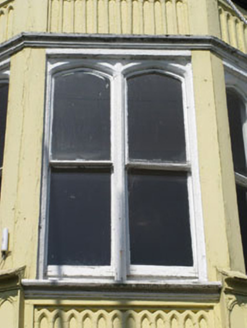Survey Data
Reg No
20853071
Rating
Regional
Categories of Special Interest
Architectural, Artistic, Historical
Original Use
House
In Use As
House
Date
1820 - 1840
Coordinates
176696, 65610
Date Recorded
16/04/2009
Date Updated
--/--/--
Description
Terraced two-bay two-storey over basement with dormer attic house, built c.1830, having breakfront end bay with full-height canted bay window to front (south-east). Later two-storey addition to rear (north-west). Pitched and hipped slate roofs with overhanging timber clad eaves, having rendered chimneystack and cast-iron rainwater goods. Recent dormer window to rear. Rendered walls throughout. Rendered buttresses flanking panels with blind pointed arches and moulded cornices to canted bay. Square-headed window openings with rendered sills throughout. Pointed arch one-over-one pane timber sliding sash windows in single and bipartite arrangements to front elevation. Rendered label moulding to front elevation opening to first floor. Six-over-six pane timber sliding sash windows to rear elevation, having timber casement window to dormer window. Square-headed door opening with render label moulding to front elevation, having recent aluminium framed double-leaf door surmounted by multiple-pane overlight with lancet tracery. Square-headed door opening to basement of rear elevation, having timber battened door. Roughcast rendered enclosing wall to south-east with square-profile rendered gate piers.
Appraisal
One of a fine terrace of eight houses which were designed by renowned Cork architect, Henry Hill. Set overlooking the harbour, the terrace was built just as Monkstown was becoming a fashionable seaside resort. The projecting bays are a particularly notable feature of the group, with their fanciful traceried windows, stepped buttresses and pointed arch panelled panels. Though some houses have lost parts of their original fabric, nonetheless the terrace as a whole makes a valuable contribution to the streetscape. The surviving historic features could act as templates for the reinstatement of lost elements in the future.
